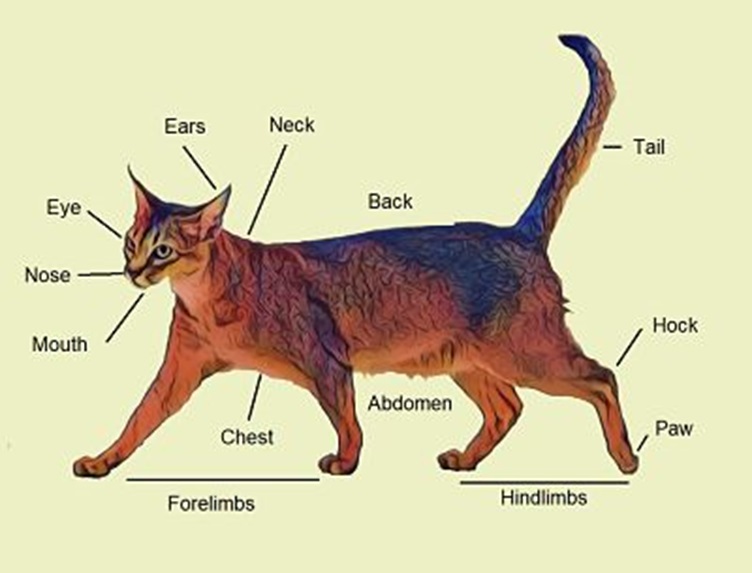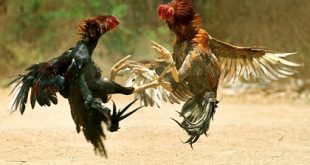Cats are fascinating creatures that have captivated humans for centuries with their agility, grace, and unique physical features. Every part of a cat’s body is specifically designed for survival, hunting, and maintaining balance in its natural environment. In this article, we’ll delve into some of the most notable body parts of a cat and explore their incredible functions in detail.
A Body Part of A Cat

1. Whiskers (Vibrissae)
Whiskers are one of the most distinctive and important features of a cat. These long, stiff hairs are located on a cat’s face, primarily on the muzzle, above the eyes, and on the back of the legs. Whiskers serve as sensory tools that help cats navigate their surroundings.
Function:
- Whiskers are highly sensitive to touch and can detect even the slightest changes in air currents, helping cats sense nearby objects without seeing them.
- They act as a spatial awareness tool, allowing cats to determine whether they can fit through tight spaces.
- Whiskers also play a role in communication, with their position indicating a cat’s mood (forward whiskers suggest curiosity, while flattened whiskers indicate fear or aggression).
2. Eyes
A cat’s eyes are one of its most striking features, often glowing with intensity. Cats have large, forward-facing eyes that are well-adapted for their predatory lifestyle.
Function:
- Cats have excellent night vision due to the high number of rod cells in their retinas, allowing them to see in low-light conditions.
- The tapetum lucidum, a reflective layer behind the retina, enhances light sensitivity and creates the glowing effect seen in a cat’s eyes at night.
- Their vertical slit pupils can expand and contract rapidly, enabling them to control the amount of light entering the eyes and focus on their prey effectively.
3. Ears
Cats have highly mobile ears that can rotate up to 180 degrees, allowing them to pinpoint sounds with remarkable accuracy.
Function:
- The external ear (pinna) captures sound waves and funnels them into the ear canal, amplifying sounds.
- Cats can hear a wide range of frequencies, including ultrasonic sounds, which helps them detect the high-pitched noises made by rodents and other small prey.
- The inner ear contains the vestibular system, which is responsible for maintaining balance. This is why cats are so adept at landing on their feet when they fall.
4. Paws
A cat’s paws are soft, padded, and equipped with retractable claws. These versatile appendages are essential for a cat’s survival.
Function:
- The pads on a cat’s paws cushion their steps, allowing them to move silently while stalking prey.
- Retractable claws help cats climb, hunt, and defend themselves. They can extend their claws when needed and retract them to prevent wear and tear.
- The paw pads also contain sweat glands, which help cats regulate their body temperature and mark their territory through scent.
5. Tail
A cat’s tail is more than just an expressive appendage; it plays a crucial role in their overall balance and communication.
Function:
- The tail acts as a counterbalance when a cat jumps or climbs, helping them maintain stability.
- Cats use their tails to communicate their mood. For example, a puffed-up tail indicates fear, while a relaxed tail held high signifies confidence.
- In social interactions, the tail’s position can convey friendliness, aggression, or curiosity.
6. Tongue
The tongue of a cat is a multifunctional organ covered with tiny, backward-facing spines called papillae. These spines are made of keratin, the same material found in human nails.
Function:
- The papillae help cats groom themselves by detangling fur and removing dirt and loose hair.
- Cats use their tongues to lap up water in a unique way, creating a column of liquid by quickly flicking their tongues in and out.
- The rough texture of the tongue helps cats scrape meat off bones while eating.
7. Fur
A cat’s coat is not just for aesthetic appeal; it serves several important functions that contribute to their survival and comfort.
Function:
- The fur provides insulation, keeping cats warm in cold weather and protecting them from excessive heat by reflecting sunlight.
- It acts as a barrier against environmental elements such as wind, rain, and harmful UV rays.
- Cats rely on their fur for sensory input, as the hair follicles are connected to nerve endings that detect touch and vibrations.
- The coat also plays a role in camouflage, helping cats blend into their surroundings while hunting or avoiding predators.
8. Teeth
Cats are obligate carnivores, and their teeth are perfectly adapted for catching and consuming prey. They have a total of 30 teeth, each serving a specific purpose.
Function:
- The sharp canines are designed for puncturing and gripping prey.
- The incisors at the front of the mouth are used for nibbling and grooming.
- Molars and premolars are adapted for shearing meat rather than grinding, reflecting their carnivorous diet.
9. Spine
The cat’s spine is incredibly flexible, consisting of more vertebrae than humans. This flexibility is key to their agility and ability to perform acrobatic movements.
Function:
- The spine allows cats to twist their bodies mid-air, which is essential for their ability to land on their feet.
- The flexibility enables cats to achieve a greater stride length when running, making them efficient hunters.
- The spinal column also provides support and protection for the nervous system.
10. Nose
A cat’s nose is a highly sensitive organ that plays a vital role in their sense of smell. It is an essential tool for communication, hunting, and survival.
Function:
- Cats have a highly developed sense of smell, which they use to identify food, detect danger, and recognize other animals.
- The nose plays a role in pheromone detection, allowing cats to communicate with each other through scent markings.
- A cat’s sense of smell is also tied to their appetite, helping them identify suitable food sources.
Conclusion
Each body part of a cat is a marvel of natural design, perfectly suited to their predatory lifestyle and survival needs. From the sensitive whiskers that guide them through the dark to the powerful hind legs that enable them to leap great distances, every feature has a purpose. Understanding the functions of these body parts not only deepens our appreciation for cats but also helps us care for them better, ensuring their health and happiness in our homes and beyond.


